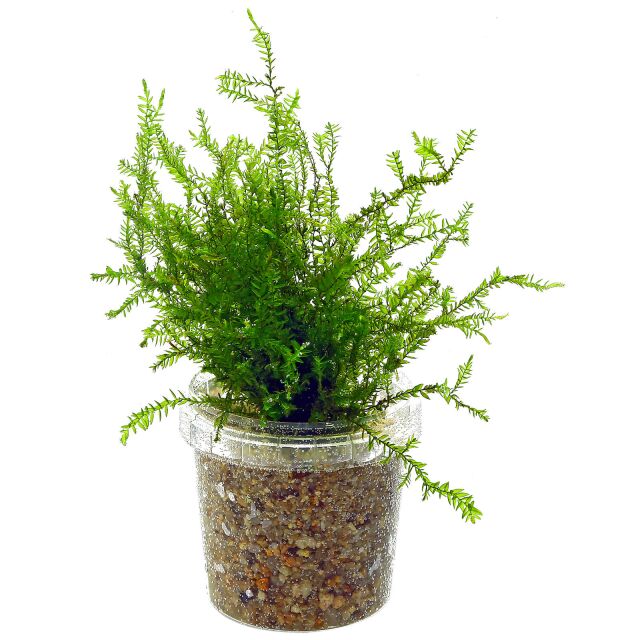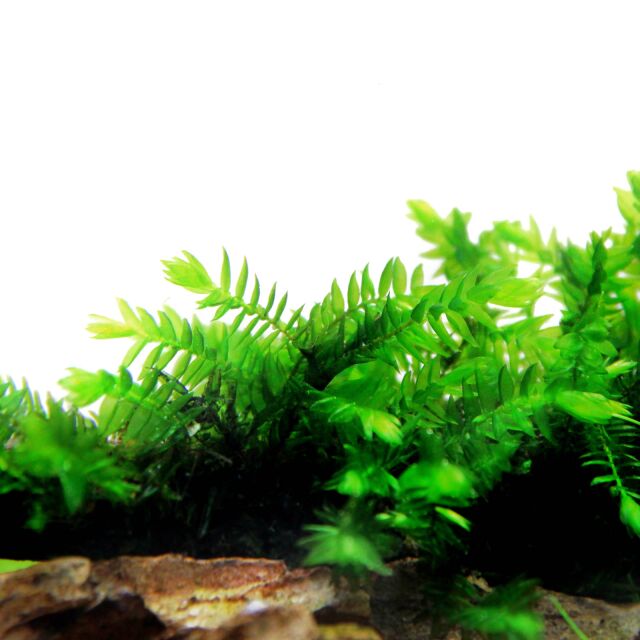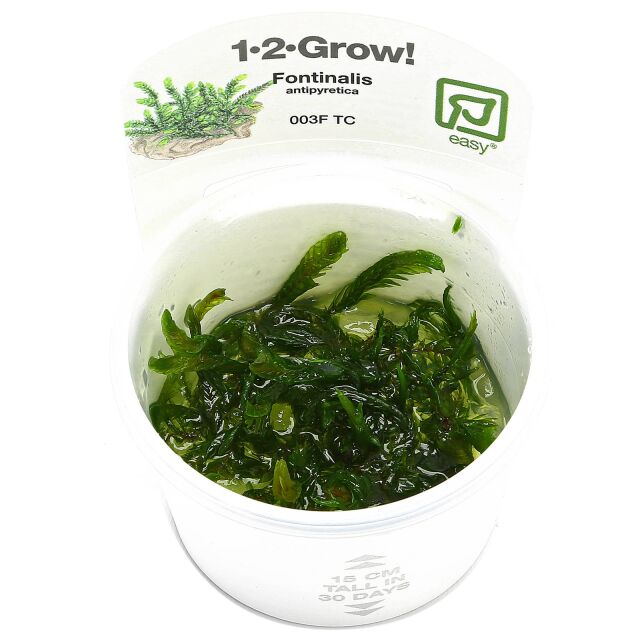Willow moss




Fontinalis antipyretica
Willow moss
- Large aquatic moss
- Nice dark green colours
- Also suitable for cold water tanks
Sign in or Register
Item question
We’re here for you!
Please enter your question and e-mail and we’ll contact you as soon as possible. It usually takes us up to 24 hours during business days to respond.
Thank you for your question!
Thank you, we’ll get in touch!
Close window
You already sent us a question.
Please wait a few minutes
Description
Fontinalis antipyretica, the Greater water moss or Willow moss, is a large moss mainly distributed in the temperate climate zone of the northern hemisphere. It is a true aquatic moss, which is found in many clean flowing as well as stagnant waters. Fontinalis antipyretica forms large, deep green bushes.
The Willow moss is ideally suited for cold water aquariums with temperatures up to approx. 20 °C. However, it also thrives in moderately temperate tropical aquariums, best with CO2 addition and complete macro- and micronutrient supply. In our experience, however, permanently high temperatures of over 26 °C are unfavourable. Fontinalis antipyretica gets by with little light, but develops most beautifully in medium to high light levels with a good supply of CO2 and nutrients. Growth can be relatively fast for a moss. It can be propagated simply by cutting off the branching shoots.
Fontinalis antipyretica works best when it is tied up on wood or stones or when the individual shoots are tied together in clumps. However, this moss does not attach itself to the substrate. You can attach the moss bushes to suction cups and attach them to the back wall of the aquarium, or tie them to branches of root wood to imitate a tree.
Fontinalis antipyretica, or willow moss, is most widely spread in the northern hemisphere. It is a true aquatic moss and can be found in many flowing and stagnant waterbodies.
F. antipyretica is a very variable moss. On the one hand, its look depends a lot on the conditions it grows in, on the other hand, there are various forms that maintain their differences even if cultivated under the same conditions. Several varieties have been described, e.g. the large-growing form F. antipyretica var. gigantea. Sometimes, F. antipyretica is hard to discern from other, far more uncommon Fontinalis species like F. hypnoides or F. howellii.
Willow moss is the most well-known aquatic moss native to Europe, and it has found its way into aquarium literature, too. (read more)
| Complete botanical name | Fontinális antipyrética Hedw. |
| Family | Fontinalaceae |
| Genus | Fontinalis |
| Difficulty | medium |
| Usage | Epiphyte (growing on hardscape), Plant for spawning, Nano tanks |
| Growth | medium |
| pH value | 5 - 7 |
| Temperature tolerance | 4 - 26°C |
| Carbonate hardness | 0 - 15°dKH |
| General hardness | 0 - 30°dGH |
| Propagation | Splitting, cutting off daughter plants |
| Can grow emersed? | unknown |
| Source | Flowgrow |
| Complete botanical name |
| Fontinális antipyrética Hedw. |
| Family |
| Fontinalaceae |
| Genus |
| Fontinalis |
| Difficulty |
| medium |
| Usage |
| Epiphyte (growing on hardscape), Plant for spawning, Nano tanks |
| Growth |
| medium |
| pH value |
| 5 - 7 |
| Temperature tolerance |
| 4 - 26°C |
| Carbonate hardness |
| 0 - 15°dKH |
| General hardness |
| 0 - 30°dGH |
| Propagation |
| Splitting, cutting off daughter plants |
| Can grow emersed? |
| unknown |
| Source |
| Flowgrow |
How many plants do I need?
General information
Please choose a variant to see more information.
| Item no. |
|
| EAN | |
| Weight | |
| Shipping weight |
Customers ask customers
You have questions about this product? Ask other customer or our support team about this product!
Customer reviews
4 Reviews
| 5 Stars(3) |
|
| 4 Stars(1) |
|
| 3 Stars(0) |
|
| 2 Stars(0) |
|
| 1 Star(0) |
|